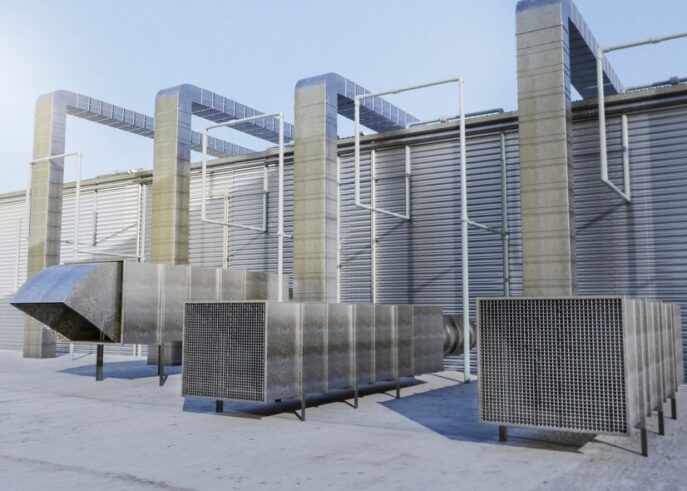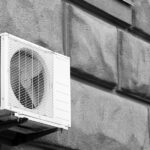
How to Choose the Right Indoor Air Purification System
Choosing the right indoor air purification system is essential for maintaining a healthy and comfortable living environment. With a plethora of options available, it’s important to understand the different technologies and features each system offers. This guide will help you navigate through the choices, ensuring you select an air purifier that effectively removes contaminants, suits your specific needs, and fits seamlessly into your home. By making an informed decision, you can significantly improve the air quality indoors, promoting better health and well-being.
Understanding Indoor Air Purification Basics
Indoor air purification is the process of removing contaminants from the air within a home or building. These contaminants can include dust, pollen, pet dander, mold spores, and volatile organic compounds (VOCs) from household products. Effective air purifiers utilize various technologies, such as HEPA filters, activated carbon, and ultraviolet (UV) light, to capture or neutralize these pollutants, ensuring cleaner and healthier indoor air.
Understanding the basics of indoor air purification is crucial for selecting the right system. Different purifiers target different types of contaminants, and some combine multiple technologies for comprehensive purification. Knowing the strengths and limitations of each technology will help you make an informed choice, ensuring your indoor environment is both safe and comfortable.
Why You Need an Indoor Air Purification System
An indoor air purification system is essential for maintaining a healthy living environment, especially if you or your family members suffer from allergies, asthma, or other respiratory conditions. Indoor air can be more polluted than outdoor air due to the accumulation of dust, pet dander, mold spores, and chemicals from household products. By effectively removing these contaminants, an air purifier can significantly improve air quality, reducing the risk of health issues and enhancing overall well-being.
Beyond health benefits, an indoor air purification system can also enhance your home’s comfort and cleanliness. It helps eliminate unpleasant odors, reduces dust accumulation, and can even prevent the spread of airborne pathogens. Investing in a quality air purifier ensures a fresher, safer, and more comfortable indoor environment for you and your family.
Different Types of Indoor Air Purifiers
Choosing the right indoor air purification system involves understanding the different types available, each designed to tackle specific air quality issues. Here are four common types of air purifiers to consider:
- HEPA (High-Efficiency Particulate Air) Filters: HEPA filters are known for their ability to capture 99.97% of particles as small as 0.3 microns, including dust, pollen, and pet dander. These filters are highly effective for allergy and asthma sufferers, providing clean and breathable air.
- Activated Carbon Filters: Activated carbon filters are excellent at removing odors, gases, and VOCs from the air. They work by adsorbing pollutants onto the surface of the carbon, making them ideal for homes with strong smells from cooking, pets, or smoke.
- UV (Ultraviolet) Air Purifiers: UV air purifiers use ultraviolet light to kill bacteria, viruses, and mold spores. This technology is often used in conjunction with other filtration methods to enhance overall air purification and is particularly effective in preventing the spread of airborne pathogens.
- Ionic Air Purifiers: Ionic air purifiers release negative ions that attach to airborne particles, causing them to fall to the ground or stick to surfaces. While they are effective at reducing airborne dust and allergens, they may produce ozone, which can be a concern for some users.
How to Assess Your Home’s Air Quality Needs
Assessing your home’s air quality needs begins with identifying the sources of indoor air pollution. Common pollutants include dust, pet dander, mold spores, pollen, and volatile organic compounds (VOCs) from cleaning products or furniture. Pay attention to any symptoms experienced by household members, such as allergies, asthma, or respiratory issues, which can indicate poor air quality. Additionally, consider the location of your home; urban areas or homes near industrial sites may have higher levels of outdoor pollutants infiltrating the indoor environment.
Conducting an indoor air quality test can provide detailed insights into the specific pollutants present in your home. This information is crucial for selecting an indoor air purification system that effectively targets your unique air quality concerns. Consulting with a professional can also help in identifying the best solutions for your specific situation.
Key Features to Look for in an Indoor Air Purifier
When selecting an indoor air purification system, it’s essential to consider key features that ensure optimal performance and suitability for your specific needs. Here are four critical features to look for:
- Filtration Efficiency: Look for purifiers with high-efficiency filters, such as HEPA filters, which can capture 99.97% of particles as small as 0.3 microns. This ensures effective removal of allergens, dust, and other pollutants from the air.
- Noise Levels: Consider the noise level of the air purifier, especially if it will be used in bedrooms or living areas. Opt for models with quiet operation settings to maintain a peaceful indoor environment without compromising on air quality.
- Coverage Area: Ensure the air purifier is suitable for the size of the room where it will be used. Check the manufacturer’s specifications for the maximum coverage area to make sure it can effectively purify the air in your space.
- Additional Features: Look for additional features that enhance usability and performance, such as air quality sensors, automatic mode, remote control, and smart connectivity. These features can provide convenience and improve the overall efficiency of the air purifier.
Sizing Your Indoor Air Purification System Correctly
Choosing the right size for your indoor air purification system is crucial for ensuring optimal performance. The size of an air purifier should match the room’s square footage where it will be used. Most manufacturers provide guidelines on the maximum coverage area for each model. For larger spaces, consider an air purifier with a higher Clean Air Delivery Rate (CADR), which indicates the volume of filtered air delivered per hour and helps determine the unit’s efficiency.
In addition to room size, consider the purifier’s placement within the space. Positioning it centrally or in areas with high airflow can enhance its effectiveness. For homes with multiple rooms or floors, multiple units or a whole-house system may be necessary to maintain consistent air quality throughout. Properly sizing your air purifier ensures it can adequately filter the air, providing a healthier living environment.
Energy Efficiency and Maintenance of Air Purifiers
Energy efficiency is a crucial factor when selecting an indoor air purification system. Look for models with Energy Star ratings, which consume less power while delivering optimal performance. Energy-efficient air purifiers not only reduce your electricity bills but also minimize environmental impact.
Maintenance is equally important for sustaining the purifier’s effectiveness. Regularly replacing filters, cleaning the unit, and checking for any wear and tear ensures it operates efficiently. Some models come with filter replacement indicators and easy-to-clean designs, making maintenance hassle-free and prolonging the purifier’s lifespan.
Top Indoor Air Purification Brands to Consider
When choosing an indoor air purification system, it’s essential to consider reputable brands known for their quality and reliability. Dyson, known for its advanced technology and sleek designs, offers powerful air purifiers with HEPA filters and additional features like air quality sensors.
Another top brand is Honeywell, which provides a range of air purifiers suitable for different room sizes and budgets. Honeywell’s products are praised for their durability, effectiveness, and user-friendly features. Both brands have established themselves as leaders in the industry, ensuring you get a high-performing air purifier.
Cost vs. Value: Making the Right Investment
When investing in an indoor air purification system, considering the cost versus the value it provides is essential. Higher-priced models often come with advanced features such as multi-stage filtration, smart connectivity, and quieter operation, which can significantly enhance your air quality experience. However, it’s crucial to assess whether these additional features align with your specific needs and justify the extra expense. Sometimes, mid-range models can offer excellent performance and essential features at a more affordable price.
Additionally, consider the long-term costs associated with maintenance, such as filter replacements and energy consumption. While a more expensive unit might have higher upfront costs, its energy efficiency and durable build can lead to savings over time. Evaluating the total cost of ownership, including both initial investment and ongoing expenses, will help you make a more informed decision and ensure you get the best value for your money.
Tips for Maximizing Your Indoor Air Purification System’s Performance
To ensure your indoor air purification system performs at its best, it’s important to follow some practical tips. Here are four key strategies to maximize your air purifier’s efficiency:
- Regular Filter Maintenance: Regular filter replacement is crucial for optimal performance, following manufacturer’s recommendations. Pre-filters should be cleaned or replaced as needed to prevent clogs and maintain airflow.
- Proper Placement: Position air purifier centrally, ensuring ample space for unobstructed airflow, and avoid placing it near walls, furniture, or curtains to maximize its effectiveness.
- Consistent Operation: To optimize air purifier performance, run it continuously, especially in high-traffic or polluted areas, and use auto or sleep mode at night to maintain air quality while conserving energy.
- Regular Cleaning: Regularly clean your air purifier’s exterior and vents to prevent dust buildup, maintain efficiency, and follow manufacturer’s guidelines for maintenance, ensuring smooth and effective operation of your air purifier.
Selecting the right indoor air purification system is vital for maintaining a healthy and comfortable home environment. By understanding the various types and key features, you can make an informed decision tailored to your specific needs.
At Cool Factory, Inc., we are dedicated to helping you breathe easier with top-of-the-line air purification solutions. Contact us today at (703) 713-5113 or visit our location in Sterling, VA, to find the perfect air purifier for your home. Don’t wait—enhance your indoor air quality now for a healthier tomorrow.






